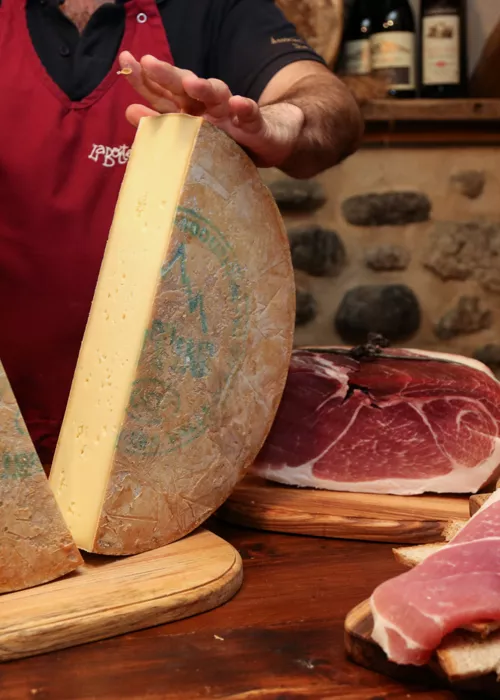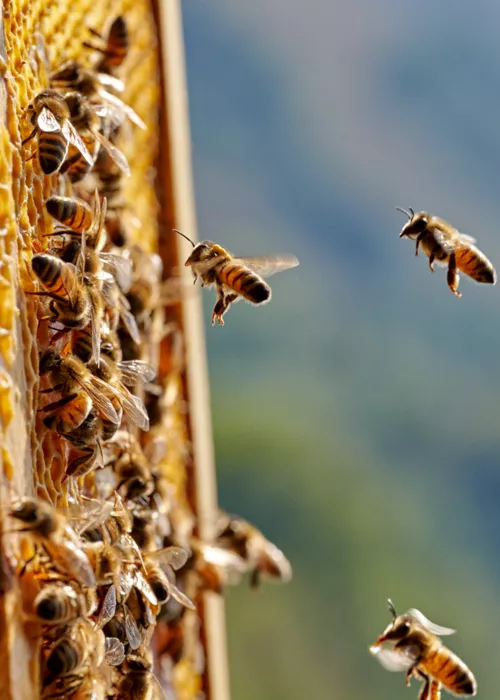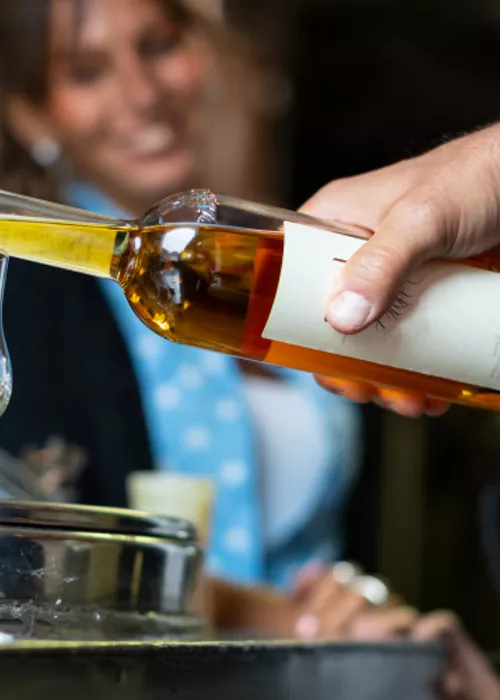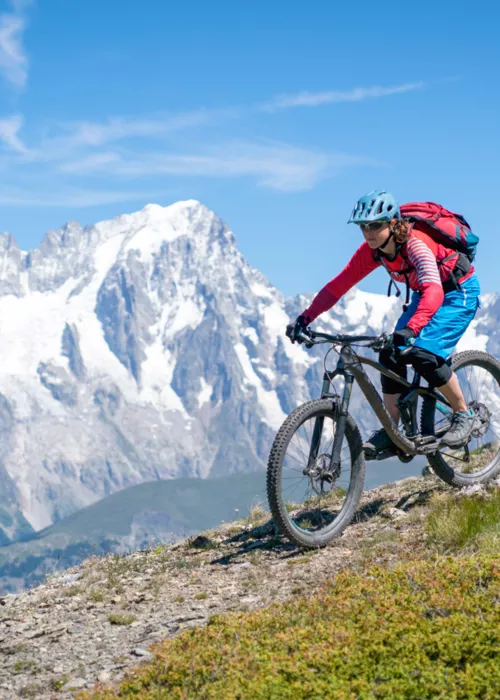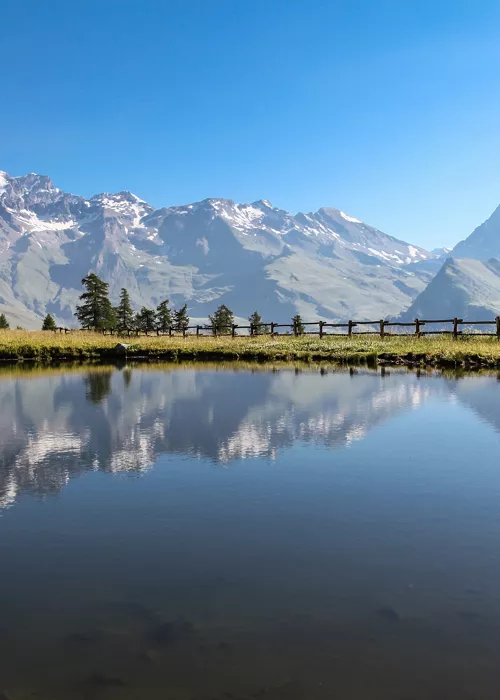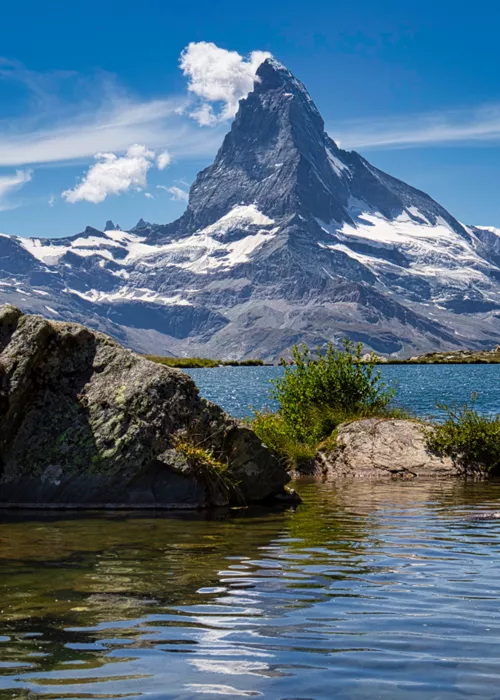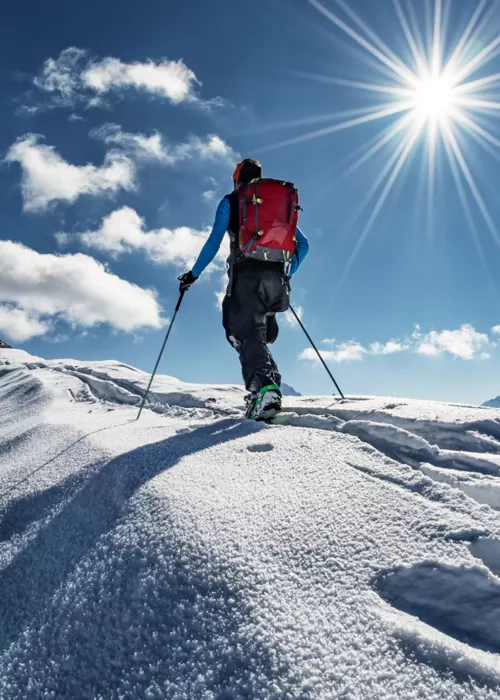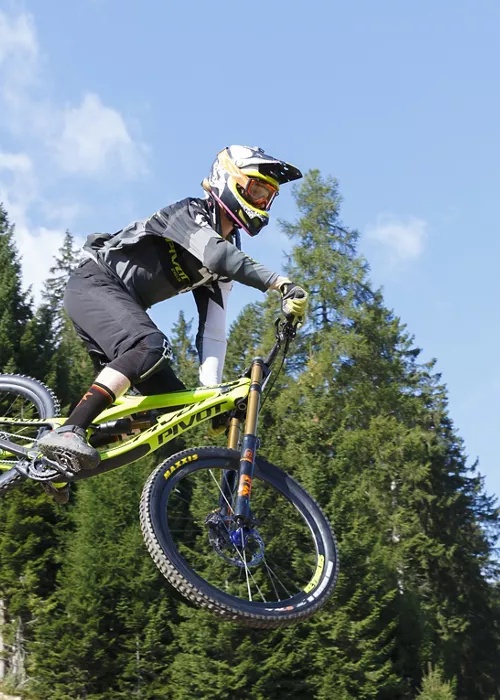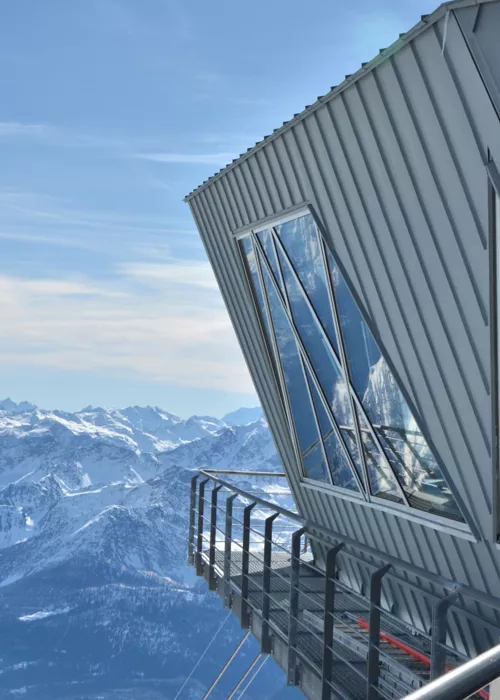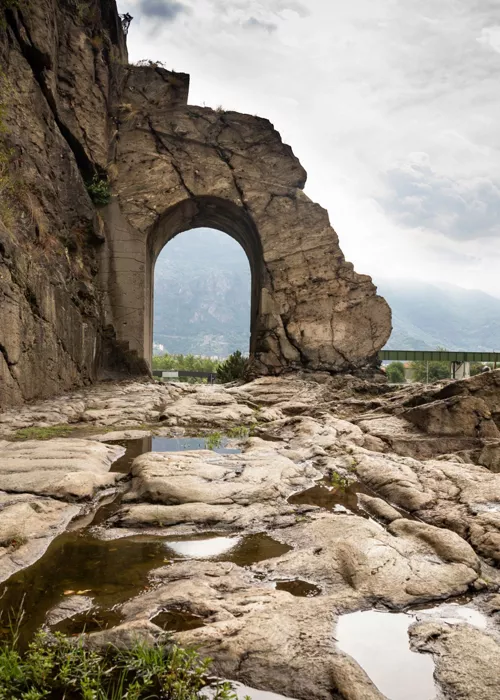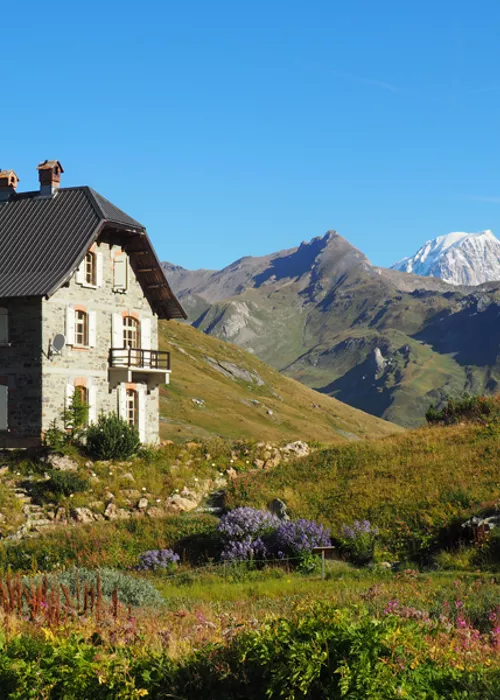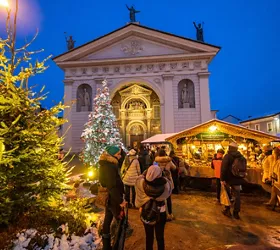Enotour in Valle D’Aosta
5 minutes

Untouched nature, heroic viticulture, and traces of ancient history make Italy’s smallest region a destination with many faces. Valle D’Aosta is a land to experience in every season: in winter on the ski slopes amid the enchanting scenery of Courmayeur, and on warmer days with a stroll through Aosta, a stronghold of ancient Roman civilization, or a hike through villages nestled in the captivating Alpine landscape. These are just a few of the many unmissable places this borderland has to offer—along with, of course, superb mountain wines that overcome cold winds and dizzying altitudes, carrying forward a truly precious winemaking tradition. A heritage of immense value to be discovered through the wineries of Movimento Turismo del Vino—strolling through the vineyards, relaxing in nature, and enjoying lunches and dinners with the winemakers to learn each producer’s story and the uniqueness of every wine.
To discover the wineries of Movimento Turismo del Vino Valle d’Aosta, visit the official website.
Glacier wines and untouched nature in the Alta Valle

The first stop of the itinerary is the Alta Valle, leaving behind the Mont Blanc massif. This area has a historic vocation for the cultivation of Prié Blanc vineyards that reach up to 1,200 meters. From these glacier vineyards comes the famous Vallée d’Aoste DOC Blanc de Morgex et de La Salle, known as one of the highest altitude wines in Europe. A fresh and delicate aromatic profile that captivates the nose with notes of green apple, mountain flowers, and hints of citrus, while on the palate it releases a minerality that reflects the uniqueness of this terroir. Just a few kilometers away lies the village of Arvier, a charming town where Enfer d'Arvier is produced, named after its particularly warm and sunny area. Here, Petit rouge vines—the region’s most famous red grape—grow perched on steep terraced slopes and give rise to intense wines that envelop with notes of red fruits and spices, aromas that return on the palate with a slightly almondy finish. These distinctive and noteworthy wines are best enjoyed with tastings of traditional regional dishes like Zuppa alla Valpellinentze, made with bread, fontina cheese, and broth, or the fragrant CARBONADE, typical beef bites cooked with onion and white wine. Delicious flavors and great wines await in guided tastings led by the winemakers of Movimento Turismo del Vino, offering a true immersion into rural life and local culture. Visits to marvelous castles perched above the valleys offer panoramic views, along with numerous nature excursions, such as those in the Lago di Lolair nature reserve or the many hiking trails like the Cammino Balteo. A visit to the Big Bench—the giant bench of Verney—is a must for nature lovers looking to relax with a good book and a view of Mont Blanc. And for those seeking a regenerating break, the MTV wineries also offer a day experience at QC Terme di Pré-Saint-Didier, at the foot of Courmayeur.
Torrette and the ancient villages of the Media Valle

Continuing along the Dora Baltea river, the valley opens up and vineyards decorate the landscape, bordered by dry-stone walls at the foot of towering peaks. In this area, characterized by poor, stony soils, grow the region’s most important native grape varieties, including Petit rouge, Fumin, and Cornalin—the stars of Torrette DOC. With a vibrant ruby color and violet reflections, this wine condenses notes of raspberry, redcurrant, and a gentle herbal scent, finishing with light tannins and a pleasantly almondy touch. The basic version maintains good sapidity, while the Superioreversion, aged at least 8 months in barrels, offers more structure. In the Alpine setting of the village, the Castello di Saint Pierre stands out, perched imposingly atop the rock amid the green landscape of Valle D’Aosta. For those seeking a deep connection with nature, a walk along the Pont d’Ael is a must: the lush landscape, with its imposing mountains and the flowing Grand Eyvia stream, is the perfect setting for a moment of peace and relaxation. It’s then time to visit Aosta, the so-called “Rome of the Alps,” for its Roman-era sites such as the Porta Praetoria, the city’s main entrance, the Teatro Romano, and the Criptoportico Forense, an underground structure that was once part of the ancient forum. Upon returning, enjoy a wine tasting among the vines, or a sunset aperitif or dinner organized by the Movimento Turismo del Vino wineries. Among the region’s great excellences is honey production, a tradition many wineries have inherited from their grandparents and continue today in perfect harmony with the environment. From Millefiori to Chestnut honey and rarer varieties like Dandelion and Rhododendron, each honey—like each wine—expresses the essence of the mountain terroir.
The lands of the Bassa Valle and the expression of Nebbiolo

The tour continues towards Montjovet, a village marking the entrance to the Bassa Valle. Here the most widespread grape is Nebbiolo, locally known as Picoutener or Picotendro, the star of the Arnad-Montjovet DOC wine area. This zone produces wines of notable structure, with violet and earthy notes—typical of Nebbiolo—that with aging evolve toward tobacco and leather, while maintaining a pleasing softness and a lively acidity that invites the next sip. The architectural and artistic heritage of the area reveals itself at every corner: castles, archaeological sites, and many other beautiful places can be discovered along the Strada delle Gallie, a journey through the local winemaking culture leading to Lago di Villa, a nature reserve of reeds, crystal-clear waters, and lush woods. Then there’s Castello di Fenis, one of the most striking castles in the valley, and the Forte di Bard, an imposing military structure now home to the Museo delle Alpi. A must is a hike in the Parco Nazionale del Gran Paradiso, Italy’s first national park—a true sanctuary of biodiversity and breathtaking scenery. Explore it through Val di Rhemes and Valle di Cogne, with their crystal-clear alpine lakes, the spectacular Cascata di Lillaz, and the botanical garden preserving the local flora and ecosystems of the park. After a bike ride or a walk through the charming mountain villages, it’s time to enjoy a tasting in the Movimento Turismo del Vino wineries, followed by a dinner in a local restaurant featuring regional products, meats, and vegetables sourced locally. Among the top specialties, one cannot miss Lardo di Arnad DOP, made from the finest cuts of local pigs, brined with spices and aromatic herbs, and aged over six months in traditional wooden containers called doils, made of chestnut or larch, which contribute to the unmistakable aroma of this product.



